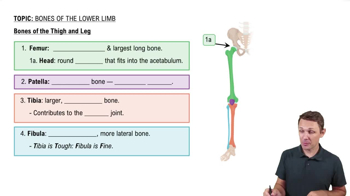Here are the essential concepts you must grasp in order to answer the question correctly.
Muscle Compartments
Muscle compartments are anatomical spaces in the body that contain groups of muscles with similar functions, innervation, and blood supply. Each compartment is surrounded by fascia, which helps to separate and protect the muscles. Understanding these compartments is essential for identifying specific muscles and their roles in movement.
Recommended video:
Introduction to Muscles and Muscle Tissue Example 1
Foot Muscles
The foot contains several layers of muscles, with the third layer primarily consisting of the adductor hallucis and the flexor hallucis brevis. These muscles play crucial roles in stabilizing the foot and facilitating movements such as walking and balancing. Knowledge of these muscles is vital for understanding foot mechanics and pathology.
Recommended video:
Thigh and Leg Compartments
The thigh and leg are divided into compartments that house specific muscle groups. The medial compartment of the thigh includes muscles like the adductor longus and adductor magnus, while the posterior compartment of the thigh contains the hamstring muscles. Recognizing these compartments aids in comprehending their functions in locomotion and their clinical significance in injuries.
Recommended video:
Bones of the Thigh and Leg
 Verified step by step guidance
Verified step by step guidance


